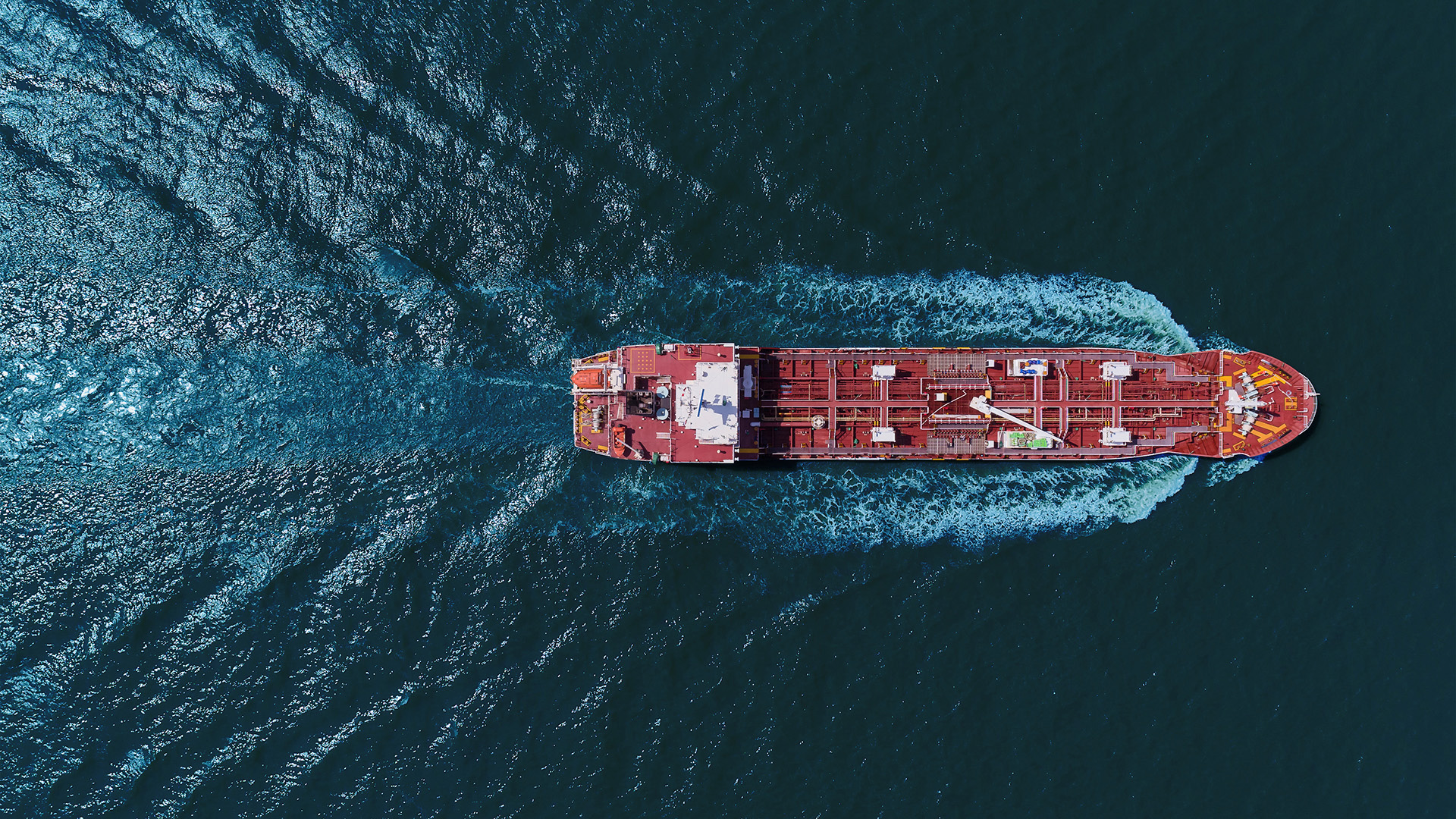The EU’s regulation on the FuelEU Maritime Initiative (FEUM) is due to come into force in January 2025. FEUM is part of a bundle of environmental measures introduced by the EU, known as “Fit to 55", and is designed to accelerate the decarbonisation of the maritime industry by applying an increasingly stringent set of targets supported by financial penalties for non-compliance, which it is hoped will increase demand for (and use of) renewable and low-carbon maritime fuels and decrease greenhouse gas (GHG) emissions across the maritime sector.
In this article we consider the headline issues and how owners and operators can deal with this very significant new regulation.
FEUM: an overview
Scope of the regulation
FEUM currently applies to all ships, regardless of their flag state, over 5000 gross tonnes (GT) visiting a port within the EU, although there is an expectation that the regulation will eventually be extended to ships under the 5000 GT limit.
The legislation requires vessels to calculate the yearly GHG intensity of the energy used by the vessel and provides that this should not exceed the limits set by FEUM. The GHG intensity is calculated from “well-to-wake”, so this includes emissions from the fuel used onboard the ship, but also emissions produced by the extraction, production and supply of fuel to the ship’s tanks. Where biofuel is used, the GHG intensity will include the cultivation of the crop used in such fuel for instance.
FEUM requires that GHG emissions from eligible ships are reduced incrementally as against the baseline set out in the legislation, namely the average well-to-wake fuel GHG intensity of the ships in 2020 of 91.16 gCO₂e per megajoule (MJ). The required reductions in GHG intensity are:
- 2% from 1 January 2025;
- 6% from 1 January 2030;
- 14.5% from 1 January 2035;
- 31% from 1 January 2040;
- 62% from 1 January 2045; and
- 80% from 1 January 2050.
As with the EU Emissions Trading Scheme (EU ETS), the legislation is not confined to GHG emissions from voyages within the EU: 50% of emissions from voyages which start outside of the EU and end at an EU port, or which start at an EU port but end at a port outside of the EU, will also be subject to FEUM.
There is an annual reporting and verification process for vessel emissions and vessels with emissions that comply with the FEUM requirements will receive a FuelEU Maritime Document of Compliance (FEUM DOC). These regulations dovetail with both the Monitoring Reporting and Verification Regulations (MRV Regulations) and also with the EU ETS – the aim is to reduce the administrative burden on ship operators and to simplify regulation and monitoring of emissions.
Penalties for non-compliance
To encourage the improvement of GHG intensity in shipping, if a vessel’s emissions exceed the level set by FEUM, a penalty will be levied on the shipping company responsible for FEUM compliance, which will be calculated in accordance with the formula set out in the regulation. Once the relevant shipping company has paid the penalty due, provided it is in compliance with other provisions of the legislation, it will be issued with the FEUM DOC. Repeat offending, where a vessel does not hold a FEUM DOC for two consecutive years, has additional consequences. A Member State may, when such a vessel visits one of its ports either issue a detention order (for vessels flying the flag of that Member State) or issue an expulsion order (for vessels flying a different flag).
Pooling and roll over
The EU accepts that compliance will be easier for more modern vessels and that emissions from older vessels are harder to abate. Consequently, it has introduced various concepts to make FEUM compliance more flexible. For instance, it will be possible to pool the compliance balance of one ship with a number of other ships and, where this is notified in advance, the requirements of FEUM will apply to the whole pool so that it is the average of the pool emissions that must comply with the requirements of the legislation.
FEUM also provides a mechanism for rolling over surplus emissions compliance from one year into the next year for the same ship (known as “banking”) and also a limited ability to ‘borrow’ from future surpluses in the next year where there is an expectation (generated perhaps by the installation of energy saving devices, conversion to new fuels or a change in operating pattern) of an improved GHG intensity. Ships borrowing future surpluses cannot be involved in pools.
For further information on FEUM, see our more detailed article here: New regulation on the FuelEU Initiative adopted by the European Council following scrutiny | Global law firm | Norton Rose Fulbright
Key issues for the Shipping Industry
Who will be responsible for a vessel under FEUM?
The legislation is clear that only the document of compliance holder (the DOC Holder), will have responsibility for compliance with FEUM. Whilst this means that the DOC Holder will, as would be expected, be involved in the emissions collection and verification process under the MRV Regulations, it also means that the DOC Holder will be responsible for any penalties incurred by the vessel due to non-compliance with FEUM. For DOC Holders who are managers of a vessel, this will clearly be a concern. The manager will have little control over the operational decision making which will affect emissions and whether a particular vessel is or is not in compliance with FEUM; consequently the manager will not expect to be liable for any resultant penalties. Parties will need to look to deal with this issue contractually, possibly through an indemnity in favour of the manager under the ship management agreement, and we expect a great deal of negotiation in the coming months over the charterparty and ship management agreements and clauses dealing with these issues.
There is a question over how FEUM compliance surplus will be dealt with. There will be a value to any surplus which could be rolled to the next year and whilst this would, in FEUM terms, be for the DOC Holder’s account, owners or bareboat charterers are going to expect this to be returned to them. In addition, time and voyage charterers are not likely to be willing to let a manager/DOC Holder or the owners of the vessel receive the benefit of any compliance surplus where this has resulted from the charterer providing (or paying for) alternative and more expensive fuels. It is not clear how the value of this surplus would be calculated nor how a manager might be expected to account for this.
Time chartering and decision making
Where a vessel is under a time charter, parties are going to have to agree parameters around those operational decisions which can affect vessel emissions and how responsibility for the costs in relation to these should be allocated contractually between parties. For example, we would expect that time charters would explicitly deal with the requirement to comply with FEUM requirements, but how far will these provisions go? If a vessel has used more expensive, lower emission fuel to comply with FEUM and has generated a compliance surplus, will the charterer expect to receive the value of this? This raises additional questions about how this surplus is valued and how frequently compliance is assessed: is it annually or more frequently? The reverse is also relevant: how are the costs and process for dealing with a FEUM compliance deficit to be allocated?
Pooling
The ability to pool compliance balances is attractive to many ship owners and operators. The terms on which these pooling arrangements are entered into are going to have to be carefully negotiated by shipping companies and their DOC Holders. Parties will need to evaluate the cost and benefit of compliance deficient and surplus vessels and how these should be accounted for within the pool. Consideration will need to be given to ensuring how the expected compliance contributions for vessels are maintained and what steps will need to be taken if there are changes to vessel emissions which negatively impact the performance of the pool. For instance, if one modern, efficient ship permits older less efficient ships to be operated compliantly for the purposes of FEUM, how does the benefit – which would be the avoidance of fines – for the owners of the less efficient ships flow through to the owner of the more efficient ship?
Mid-period changes in ownership and DOC Holder
FEUM at present envisages that the entity that is responsible for compliance on 31 December each will be responsible for compliance for the entire year, regardless of mid-period changes in DOC Holder, whether that is due to a sale of the ship, a change in bareboat chartering arrangements for the ship or a change in manager. This will require co-operation between the first DOC Holder and any subsequent DOC Holders (and any ship owner or operator appointing them) for a particular year. It is difficult to see how existing DOC Holders will be willing to be responsible for another entity’s compliance, or that any incoming DOC Holders are going to want to rely on a third party submitting data or possibly paying any deficit penalties that the outgoing entity has incurred. However, absent any change from the EU on this, parties are going to have to try to assess what contractual agreements, indemnities and guarantees they will need to be comfortable with this. If the vessel is pooled, or has banked or borrowed emissions surpluses, then this will add another layer of complexity.
Purchasers of vessels will also need to consider FEUM issues in the sale process: for example, if the current DOC Holder has ‘borrowed’ against future compliance, how will the purchaser determine this, and once it is aware, what price could be attributed to this borrowing?
Conclusion
There is much for shipowners and operators to consider on FEUM. There is a misconception that the EU ETS is a charterers’ problem and FEUM is an owners’ problem. But the position is more complex than this and FEUM compliance is an issue which owners, charterers, ship managers and others will all have to face in the coming months. By the end of August 2024, shipping companies must have submitted a FEUM monitoring plan, and after 1 January 2025 the data must be recorded for the calendar year for verification after 31 January 2026. In June 2026, vessels will either receive a FEUM DOC or will be fined. Parties must urgently consider the issues FEUM raises and in particular look to their contracts to ensure that they are adequately protected in this respect. Co-operation and the exchange of reliable data will be key to successfully navigating the new challenges FEUM presents to the industry.




